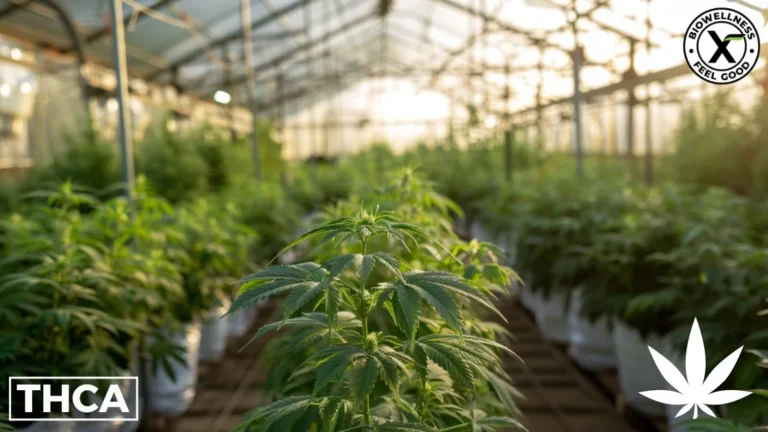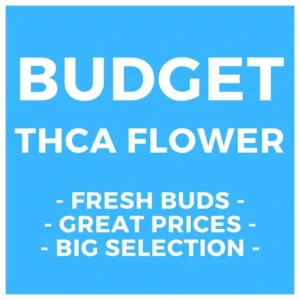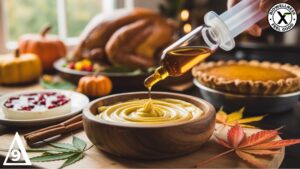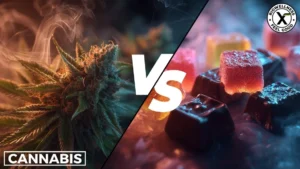With hemp flower gaining a legal stance federally, cannabis lovers started enjoying the low-THC flower nationwide. However, the craving for good old THC is still strong and then came the legal loophole in the form of THCa flower, which promises to satisfy both the cannabis community and the federal government. But how is THCa flower made?
In this blog, we’ll take you through the whole process from growing, harvesting, and storing to even the extraction process behind your favorite THCa products. Let’s get to it…
Main Key Takeaways
- In its raw form, THCa is a non-psychoactive natural cannabinoid that exists in both hemp and cannabis plants.
- Growing THCa flowers requires great attention to the plant’s strain, growing temperature, light, and soil.
- High THCa hemp flowers are legal under federal law, as long as the Delta-9 THC level remains under 0.3% of total dry weight.
- Cannabis flower containing more than 0.3% Delta-9 THC are illegal federally.
Exploring the Cultivation Process of THCa Flower
THCa, for those who don’t know, is the acidic precursor of THC. It is non-psychoactive by nature, but when heated, it turns to the potent THC we all know and love.
Think of THCa as the parent cannabinoid. The cannabis plant starts off producing it, then as the plant grows, heat does a number on it, converting THCa to THC.
So, THCa flower refers to a hemp flower priming with THCa, which you can later convert to THC when you heat it up by smoking or baking.
When thinking of THCa-rich flowers, you automatically think of how it’s grown! How do farmers with their green thumbs grow THCa flowers just right for us to enjoy? It’s really where the magic starts.
The Right Strain: First things first, they need to pick the perfect strain. Growers look for cannabis strains specifically bred to pack a punch in the THCa department. High THCa flower starts with the right seeds. From there, these babies are genetically wired to produce sky-high THCa levels.
Setting Up The Environment: You can’t grow THCa flower properly in the wrong place. Farmers create the ultimate growing environment. We’re talking about giving these plants the VIP treatment with just the right amount of light, temperature, and soil pH. Growing THCa flower isn’t as easy as other plants, because THCa can break down and turn to Delta-9 THC, defying the whole purpose.
All About Light: Perfect lighting is key. Bathing the plants in UV-B light to supercharge THCa production, letting those plants soak it all up and thrive!
Temperature Control: THCa flower likes to keep things cool, but not too cool. Temperature control is all about finding that sweet spot where the plants can flourish without breaking down in the THCa department. Farmers avoid overheating, which could zap the precious cannabinoids, while still keeping things cozy for optimal growth.
Soil pH: Last but certainly not least, it’s the soil’s pH. Think of it as the plants’ diet, they need just the right nutrients to reach their full potential. By keeping the soil pH in check, farmers ensure that our green buddies can slurp up all the good nutrients they need to pump out those juicy THCa levels.
Harnessing Nature’s Bounty: Sustainable Farming Practices for THCa
We’ve talked about how much thought goes into growing THCa flower, but we also need to be mindful of our own environment as much as the plants, as well as what goes into our bodies when we enjoy those plants.
When it comes to THCa flowers, the choices made in farming practices can significantly impact the final product’s taste, potency, and overall quality. That’s why the organic farming wave reached the cannabis industry and it’s here to stay.
So, what’s the deal with organic farming? Well, it’s all about growing plants without using synthetic pesticides or fertilizers. Instead, farmers rely on natural methods like crop rotation and compost to keep the crops healthy and happy. When it comes to THCa flowers, organic farming ensures that what you’re getting is pure and natural, free from any nasty chemicals that could harm you or the environment.
Now, about those chemicals…We know that some growers spray their THCa flowers to protect them from bugs and diseases. But here’s the thing – those chemicals might not be so great for you or the planet. That’s why we’re all about finding greener alternatives, like using natural predators to keep pests in check and practicing smart pest management techniques.
Some farmers go for natural growth aka outdoor farming! This approach lets the plants do their thing without any artificial interference. By keeping it natural, the plant keeps all of its unique qualities as nature intended, while keeping our surroundings safe and sound.
And let’s not forget about the foundation of it all: the roots! One of the most crucial aspects to a good THCa yield is ensuring the plant’s roots are healthy and resilient. That’s why farmers take tailored preventative measures against pesky aphids and other pests. If any areas are impacted, they’ll deal with them using organic safeguards, keeping those green beauties strong.
You see, sustainability isn’t just a fancy word, it’s a big deal! By farming organically and sustainably, we’re making sure that not only do you get the best product possible, but also that our land stays fertile and healthy for years to come.
Harvesting and How It Impacts THCa Levels
We all know by now how fickle THCa can be, and it doesn’t stop at the growing cannabis stage either. knowing when and how to harvest the THCa can either maintain the THC potency or drop the ball on it. (Nobody wants all the hard work to go to waste, right?)
Timing for Peak THCa Content: How do you know your flower is good to go and it’s time to start the harvest? Well, it’s all about those trichomes, those tiny resin glands where THCa likes to hang out.
By using magnification, like a microscope, growers can closely inspect trichomes and check if they’re ready. They look for a shift in color from clear to a milky white hue. That change means there’s high cannabinoid production and high THCa levels.
Harvest Techniques for Preserving THCa Levels: THCa likes to chill in those greeny leaves aka trichomes. When it’s time to harvest, farmers handle those precious trichomes with the utmost care. They carefully handle the buds to avoid damaging the delicate buds. In order to keep those delicate trichomes intact and bursting with THCa, many growers opt for sharp, sterilized scissors or shears to trim the branches and remove the buds.
There are a couple of ways to go about harvesting. Some growers like to snip the whole plant in one go to keep those trichomes safe, while others prefer a more selective approach, trimming branches as they go.
The Science of Drying and Curing: Optimizing THCa Flower Potency and Quality
By tweaking the harvest timing and handling techniques, growers can really boost the potency of THCa in their flower. And with a little TLC and attention to detail, farmers can produce buds that not only pack a punch but are bursting with flavor.
Now we’ve got our THCa hemp flower all grown and harvested beautifully, it’s time to make it into the final product with the final steps: drying and curing.
Right after harvesting, it’s all about the drying and curing process. This is where they aim to keep THCa on top of its game. Slow and steady wins the race here. Hemp growers dry those buds with low temperatures, but not too low to keep humidity in check.
Now, the curing phase is like the cherry on top! Once those buds are dried to perfection, it’s time to seal the deal, (pun intended.) They seal those buds in airtight containers with humidity packs. This not only maintains the potency but also keeps mold at bay, ensuring a safe and top-quality end product.
Preserving Purity: Understanding the Extraction Techniques Used with THCa Flower
Just storing THCa flower properly, doesn’t mean it’s completely out of the woods yet. Sometimes growers need to preserve the flower for longer or even use it to make other THCa products, so how does that happen?
First up, we’ve got flash-freezing. Right after harvest, the flowers are frozen in order to preserve trichomes in their prime state, and the bud maintains all of its THCa glory. the cannabis is frozen in its tracks, preserving those trichomes and cannabinoids in their prime state.
And then there’s cryogenic freezing—sounds fancy, right? This involves freezing the buds at super-low temps to separate trichomes from the plant. It’s the secret sauce behind live resin, keeping a high level of cannabinoids, including THCa, intact.
Now we know about the THCa flower, but how does that translate to other THCa products like THCa diamonds?
Different extraction methods:
Firstly, we have solvent-based extraction. This method uses substances like butane or CO2 to dissolve those precious trichomes away from the plant material. Later, these dissolved trichomes are collected, giving us concentrated goodness.
Secondly, we’ve got solventless techniques: these are methods that keep it natural without solvents. Some examples are ice water extraction or rosin pressing, no chemical solvents here! It’s more of a hands-on approach to getting those trichomes separated from the plant, which can be great for both health and the environment.
And thirdly, there is distillation: This method takes things up a notch by further refining cannabinoid extracts, by isolating THCa and making it even more potent through heat and vacuum filtration.
Is THCa Flower Legal?
While marijuana is still struggling with Uncle Sam, hemp plants made a homerun with the 2018 Farm Bill. This bill legalized hemp and all of its pals as long as they keep Delta-9 THC in check and under 0.3% of total dry weight.
But as cannabis fans, we still missed the taste of our old friend Delta-9 THC in higher concentrations. And hemp manufacturers did not disappoint! THCa was the perfect disguise to get us THC under the federal radar. Because THCa in its natural state doesn’t produce psychoactive effects it’s perfectly legal. However, when the final THCa product is heated, it converts to pure THC.
And so began the race for growing legal THCa hemp flower, which comes packed with high levels of this savior of a cannabinoid. But, and there’s a big but, not all states take the same stance as the federal government on this. Each state has its own laws on THCa flower, so always check your local laws.
Exploring Different Varieties and Strains of THCa Flower on the Market Today
Whether you’re a cannabis connoisseur or just starting to dip your toes into the world of hemp flower, there’s a THCa flower out there with your name on it.
You probably know that there are three main strain categories: Sativa, Indica, and Hybrid strains. The same goes for THCa flower, and each one comes with its own perks and wellness benefits.
Sativa strains are the ones to hype you up with their uplifting and energizing effects, making them perfect for daytime use. Users tell us that Sativas usually enhance creativity, boost mood, and provide a cerebral buzz without inducing drowsiness. On the other hand, Indica strains are for those who want to mellow down, thanks to their relaxing and sedating properties. If unwinding after a long day or hoping to get some shuteye is what you’re after, then Indica might be your jam.
Hybrid strains combine the best of both worlds, blending both Sativa and Indica for a balanced experience. Depending on the specific strain’s ratios, hybrids can offer a wide range of effects, from euphoric and uplifting to calming and soothing.
Now, each one of these categories has many strains under them, and each has different characteristics of THCa flower strains. For example, Purple Punch is a popular choice known for its sweet fragrance and relaxing benefits. However, some enthusiasts prefer strains with more exotic flavors and aromas, seeking unique sensory experiences. At BiowellnessX, we offer a wide selection of top-tier THCa flower strains to cater to every taste and preference.
So whether you’re down for the uplifting effects of Sativa, the relaxing properties of Indica, or the balanced experience of hybrids, there’s a THCa flower strain for you at BiowellnessX.
Finding Reputable Sources: Identifying High-Quality THCa Flower Products
When it comes to THCa flower products, finding the good stuff isn’t that easy. But how do you know if you’re getting what you paid for? Here are some of our budtender tips.
Firstly, looks do matter here. Look for clear signs of quality like vibrant colors, dense buds, and a strong aroma. If it looks and smells like it was plucked straight from the plant, you’re likely onto something good! But what if you’re buying online? Your answer is third-party lab tests and samples!
Reputable suppliers put their products to the test by independent labs to verify their quality and potency. These lab reports tell you about the cannabinoid and terpene profiles, potency as well as any potential contaminants present in the product. Always check for these lab results before buying. And many of those brands offer samples so you can get a taste before you commit to a bigger purchase.
Knowing where and how your flower grew is important. Opting for the top THCa products from organically cultivated plants ensures you don’t come across harmful pesticides or synthetic fertilizers. This not only benefits your health but also the environment. Plus, organically grown flower tends to have richer flavors and more potent effects since it soaked in all nature’s goodness.
And of course, other customers’ experiences. Check the brand’s website, and see what others are saying.
Final Thoughts: How is THCa Flower Made
In conclusion, it is possible to naturally grow a hemp flower with high THCa content. It is not an easy process as THCa is sensitive to heat and can convert to THC if not tended to properly.
Make sure you know exactly where your THCa comes from and how it’s grown, it totally impacts the flavor and strength! With THCa flower, there are a bunch of choices out there. Go for the quality flower with robust flavor and lab results for maximum satisfaction.
When shopping, stick with legit sellers who follow the rules, like BiowellnessX.
Happy Hemping!
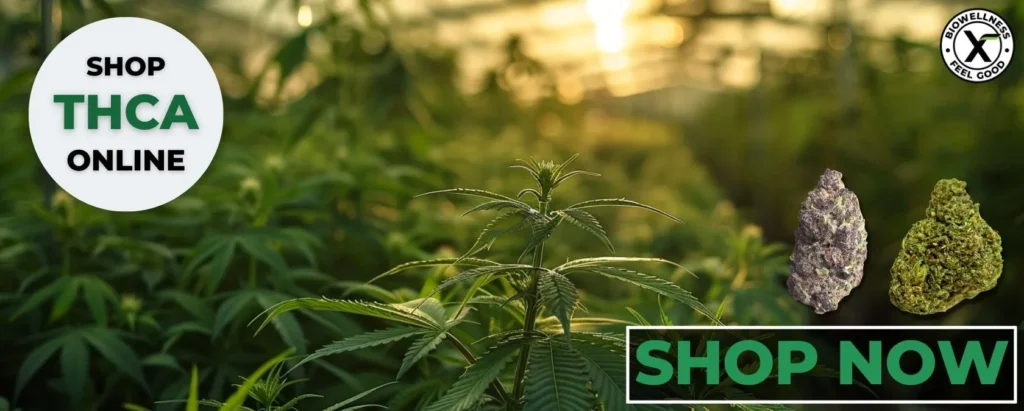
Legal Disclaimer:
By reading this information presented, you agree to release the author of any liability that comes from using this data. This post contains no legal advice. Claims about cannabinoids have not yet been approved by the FDA. Read the full legal disclaimer here.
Other Articles About THCa Flower
- Bulk THCa: Buying THCa Flower Pounds – Easy How To Guide
- THCA Legality – Is It Legal In My State?
- Where To Buy THCA Flower Wholesale Legally?
- THCA Benefits! Everything You Need To Know
What Is THCA Cannabinoid? A Beginners Guide! - THCa vs. THC; Everything You Need To Know!
- THCA VS Delta-8 THC! What Are The Differences?
- What Are THCA Diamonds – Here’s What We Know!
- Does THCA Get You High? Is It Psychoactive?
- Understanding THCa Drug Tests And How To Prevent Failing Them
References:
- Hemp Production and the 2018 Farm Bill – 07/25/2019 | FDA
- The Controlled Substances Act (dea.gov)
- (THCA-A) reduces adiposity and prevents metabolic disease
- THC is a potent PPARγ agonist with neuroprotective activity
- THCa markedly alleviates liver fibrosis and inflammation
- THCa inhibits prostate cancer tumor growth
FAQs About THCa Flower and Other THCa Products
THCa flower with less than 0.3% Delta-9 THC is federally legal.
THCA flower is generally safe when you handle it responsibly. Just make sure you’re getting it from trustworthy vendors who stick to top-notch safety and quality standards.
Most likely! THCa converts to THC with heat, which will show up on drug tests.
THCa flower take a lot of care, so with some effort, you can grow your own. However, your local laws may not allow it.

